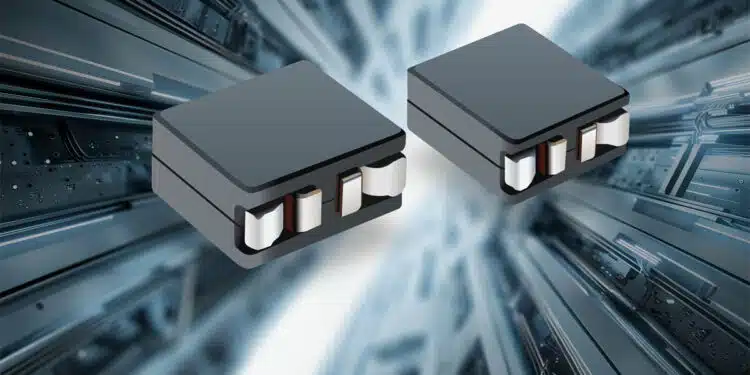Bourns’ new multiphase trans-inductor voltage regulator (TLVR) inductors deliver extremely high current capabilities, low inductance, and low DC resistance (DCR) that are designed to meet today’s data-driven application performance needs.
Engineered with a dual-winding structure and low inductance, the Bourns® Model TLVR1005T and TLVR1105T Series provide fast transient response that can scale to CPU, FPGA and ASIC load requirements.
Bourns, Inc., a leading manufacturer and supplier of electronic components for power, protection, and sensing solutions, today introduced its Model TLVR1005T and TLVR1105T Series.
Bourns’ new multiphase trans-inductor voltage regulator (TLVR) inductors deliver extremely high current capabilities, low inductance, and low DC resistance (DCR) that are designed to meet today’s data-driven application performance needs. These types of applications have evolved in processing performance and now require the support of power bead inductors that can match their exceptionally high current specifications in the same, if not less, board space. Bourns® Model TLVR1005T and TLVR1105T Series multiphase TLVR inductors meet these requirements for servers, workstations, data centers, storage systems, and desktop computers, as well as in graphics cards and a variety of battery-powered systems.
A problem arises with traditional multiphase voltage regulators (VRs) in balancing performance, as high-current output demands require an increase in the duty cycle previously handled via long individual-phase stages. New multiphase TLVR architectures, developed to mitigate transient responses stemming from sudden increases in load output, are widely adopted to address these concerns. As such, system designers see the advantages of phase coupling in TLVR architectures, enabling extremely fast transient response, scalable with CPU, FPGA, and ASIC load requirements. The adoption of this architecture allows designers to develop robust systems without sacrificing other critical design parameters such as board space, system efficiency, power density, or BOM costs.
Engineered with a dual-winding structure and clip type coil, the Bourns® Model TLVR1005T and TLVR1105T Series deliver the low inductance and extremely high current capabilities (Irms up to 77 A and Isat up to 160 A) that are needed in a new generation of multiphase power solutions. The series’ shielded construction offers low radiation with an inductance range of 70 to 200nH and an operating temperature range of -40 to +125 ºC.
The Bourns® Model TLVR1005T and TLVR1105T Series are available now and are RoHS compliant and halogen free.
Features
- Shielded construction for low radiation
- Dual-winding structure
- Extremely high current
- Inductance range: 70 to 200 nH
- RoHS compliant and halogen free
Applications
- Servers and workstations
- Data centers
- Data networking and storage systems
- Notebook and desktop computers
- Graphic cards and battery powered systems
- Multi-phase regulators
- Voltage Regulator Modules (VRMs)
































